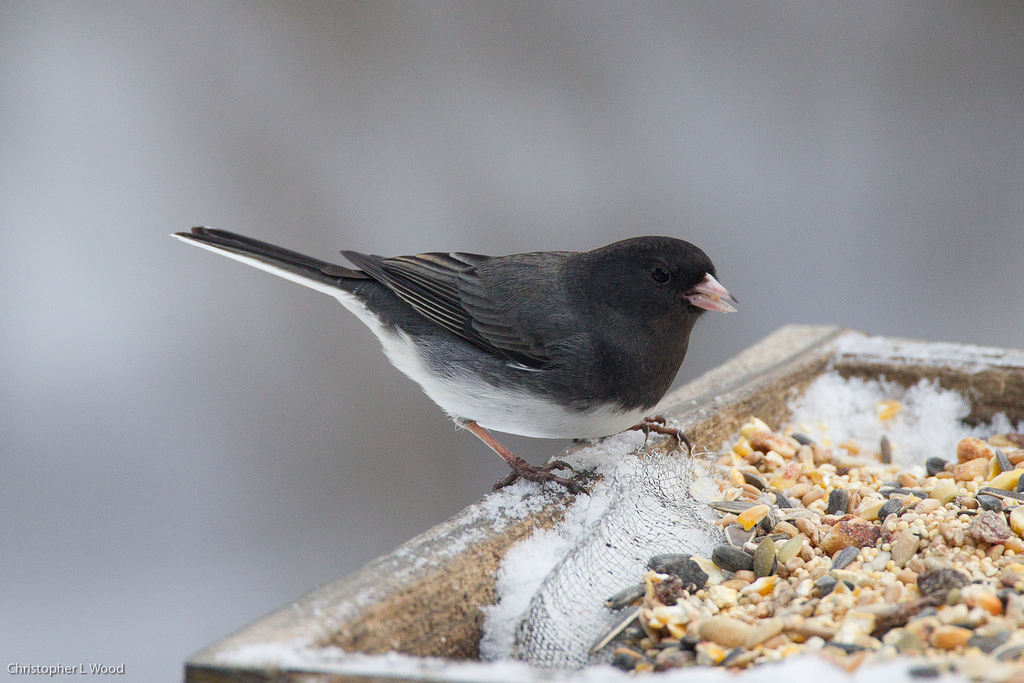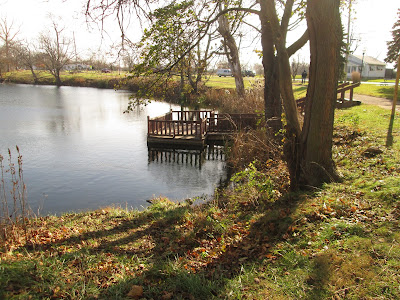Last year at this time, we were dealing with the slow fade of a relative in her late nineties. This year, a recent two-week period brought the deaths of a current colleague, our wonderful office manager's son, two former colleagues, and an old friend who was a fixture of the local political scene. Two memorial services were held just yesterday--a lot to take in all at once.
Spending time in this old town ("old" only by US standards, of course) is oddly comforting. Marietta got its start under that name in 1788, but several cultures have called this place home over the last few millennia. Our patio faces a street named Sacra Via (pronounced with a long "I" in these parts), or the sacred way, but the people to whom it was sacred are long gone from this area, although some of their monuments remain.
The oldest more or less intact monument is the Conus, the large Adena burial mound that, with its surrounding ring ditches, is the centerpiece of Mound Cemetery.
The Conus has not been studied by modern methods, but when the early US settlers found a skeleton buried near the summit of the mound, they chose to re-inter the bones and create their own cemetery surrounding it. Today, this perhaps-three-thousand-year-old dignitary is surrounded by the largest group of Revolutionary War soldiers to be found in Ohio, along with more modern graves.
The Adena culture was succeeded by the Hopewell, who lived in Ohio from roughly the time of the early Roman Republic to the final destruction of the western Roman Empire, a period of some 700 years. They were also serious creators of earthen monuments, as well as serious astronomers. The Turtle Mound, more formally known as Quadranou, aligns with the winter solstice sunset. It was the site of solstice observations some 1600 years ago, and for the last five, a local history group has renewed the tradition. We will be joining neighbors there this week to wait for the sun to hit just the right spot over the next hill.
Although not particularly visible in the photograph, sloped walkways led to the top of the mound and are still available for mindful walking (or childhood sledding). At the time of European settlement, an enclosed walkway led 680 feet from the Muskingum River to the mound itself, hence the name "Sacra Via."
But the sacred way was destroyed to make way for progress. Beginning in 1843, according to the sign a few yards from our house, the earthen walls, which were more than ten feet high, were removed to make the bricks that were essential to our expanding town (according to the local brickmaker who had managed to get elected to city council). Quite a few streets, probably including Sacra Via itself, are made of those 19th-century bricks, as is the Victorian Gothic church building where I attend services.
Changes. Always changes. After the Hopewell ceased to flourish, later native groups moved into our area, according to excavations at a nearby park. The Shawnee and Delaware hunted in this area and occasionally fought the white settlers, who eventually won that struggle. In the years before the US Civil War, Marietta was often the first stop for freedom seekers crossing the Ohio River from what was then Virginia. The open space below the Turtle Mound became Camp Tupper, a recruiting site for the Ohio Volunteer Infantry.
After the Civil War, Marietta underwent a building boom--probably still using bricks from all that excavated soil. The house we live in was built in the 1880s and added onto in the 1970s by wonderfully thrifty people who salvaged bricks from structures being demolished. I like to think that our brick floor and fireplace wall were once part of the earthworks: they are in just about the right place.
Through all the changes wrought by humans and the shortness of our individual lifespans, the soil is still there. Sometimes, we build with it. Eventually, we become it. That cycle seems to be constant.





















































